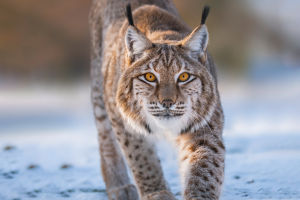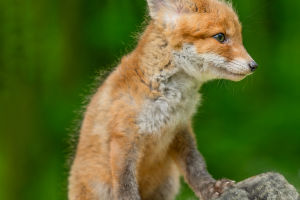In the vast expanse of the Sahara Desert, where scorching temperatures and relentless sand dunes dominate the landscape, an elegant and resilient predator roams.
The Sahara Cheetah, a rare and enigmatic subspecies of cheetah, defies the odds, adapting to the harsh desert environment.
The Sahara Cheetah, also known as the Northwest African cheetah, is a subspecies of cheetah (Acinonyx jubatus) found exclusively in the Sahara Desert and its surrounding regions. It is distinct from its counterparts in other parts of Africa, with adaptations that enable it to survive in extreme desert conditions. These adaptations include longer legs for increased speed and agility, a lighter coat to reflect the intense sunlight and a reduced need for water.
The Sahara Cheetah is a master of adaptation, relying on its incredible speed and agility to navigate the challenging desert terrain. With bursts of speed reaching up to 60 miles per hour (96 kilometers per hour), it can swiftly pursue its prey across the sandy dunes and sparse vegetation. Its slender body, long limbs, and flexible spine allow for rapid acceleration and sudden changes in direction, making it a formidable hunter.
Surviving in the Sahara Desert is no easy feat, and the Sahara Cheetah faces numerous challenges. The arid environment poses limited availability of food and water sources, requiring the cheetah to cover vast distances in search of prey.
Additionally, the expansion of human settlements, encroachment on natural habitats, and illegal hunting pose significant threats to the population. These factors have led to a drastic decline in Sahara Cheetah numbers, making them one of the most endangered big cat species in the world.
Efforts are underway to protect and conserve the Sahara Cheetah and its fragile habitat. Conservation organizations, local communities, and governmental agencies collaborate to implement measures such as establishing protected areas, conducting research on the cheetah population, and raising awareness about the importance of preserving this iconic species.
These initiatives aim to ensure the long-term survival of the Sahara Cheetah and maintain the delicate ecological balance of the desert ecosystem.
Encountering a Sahara Cheetah in its natural habitat is a rare and remarkable experience. The chance to witness its incredible speed and agility, the grace with which it moves across the desert landscape, is a true privilege. The Sahara Cheetah's sleek and aerodynamic physique, adorned with distinctive black tear stripes on its face, adds to its aura of mystique. It serves as a reminder of the remarkable diversity of life that can thrive in the most inhospitable environments.
The Sahara Cheetah is not just a symbol of resilience; it holds immense ecological importance. As an apex predator, it helps regulate prey populations and maintain the delicate balance of the desert ecosystem. Its survival is intertwined with the preservation of the Sahara Desert's biodiversity as a whole. By protecting the Sahara Cheetah, we safeguard the future of a species and contribute to the conservation of an entire ecosystem.
The Sahara Cheetah stands as a testament to the adaptability and strength of nature. Its ability to thrive in the unforgiving conditions of the Sahara Desert showcases the resilience of this magnificent species. However, its population is critically endangered, highlighting the urgent need for conservation efforts.
The Sahara Cheetah represents the fragility and beauty of our planet's diverse ecosystems and serves as a call to action to protect these invaluable habitats. Through collaborative conservation efforts, we can ensure that future generations will have the opportunity to witness the elusive elegance of the Sahara Cheetah and preserve the delicate balance of the desert environment.
The survival of this magnificent creature is not just a matter of conservation, but a reflection of our commitment to coexist with and protect the natural world that sustains us all. Let us join forces to secure a future where the Sahara Cheetah continues to grace the desert with its presence, embodying the untamed spirit of the wild and reminding us of the irreplaceable beauty that nature offers.


